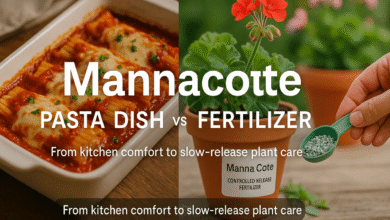Sauer Condiment NYT: The Tangy Fermented Flavor Revolutionizing Modern Cuisine

In the culinary world, a new flavor or ingredient emerges now and then that captures the imagination of chefs, foodwriters, and home cooks alike. Recently, a fermented delight called “Sauer” has become the talk of the food community, especially following a feature in The New York Times. If you’ve stumbled across the search term Sauer condiment nyt, you’re likely curious about this new tangy treat that’s shaking up kitchen routines across the globe. This article dives deep into everything you need to know about Sauer: its origins, flavor profile, health benefits, culinary applications, and why it has become such a hot topic.
What is Sauer?
Sauer is a contemporary take on traditional fermented foods, drawing inspiration from classics like sauerkraut, kimchi, mustard, and miso. The term “Sauer,” German for “sour,” is apt, considering its distinct tangy flavor derived from fermentation. But Sauer isn’t just another version of sauerkraut. It represents a fusion of ingredients and techniques from various cultures, resulting in a robust, complex, and highly versatile condiment.
According to an April 2024 article in The New York Times, Sauer is embraced by gourmet chefs and home cooks due to its bold, umami-rich taste and health-boosting probiotics. This reflects the ongoing trend in food culture, where fermentation is celebrated not only for preservation but also for the deep, satisfying flavors it imparts.
The Origins of Sauer
Fermentation is one of the earliest methods of food preservation. Sauer’s roots can be traced back to traditional German and Eastern European preservation techniques. However, what sets Sauer apart is its modern twist. Innovators in the culinary world are reimagining fermented condiments with added spices, herbs, and non-traditional ingredients like miso paste, roasted garlic, turmeric, and fruit infusions.
The New York Times article highlights several artisan producers and small-batch creators leading the charge. These food entrepreneurs combine old-world methods with contemporary palates to create something unique.
Flavor Profile and Ingredients
Sauer is celebrated for its deeply layered taste. The typical flavor profile includes:
- Tanginess: The hallmark of fermentation.
- Umami: Thanks to ingredients like miso and aged garlic.
- Spiciness: Mild to bold, depending on the variation.
- Savoriness: Herbs and spices provide an aromatic depth.
Sauer commonly contains fermented cabbage, mustard seeds, vinegar, garlic, onions, and spices like turmeric, chili flakes, dill, and fennel. It is vegan-friendly and gluten-free, accommodating many dietary preferences.
Health Benefits of Sauer
One of the reasons Sauer has gained popularity so quickly is due to its probiotic content. Like kimchi and sauerkraut, Sauer is teeming with beneficial bacteria that support gut health. Probiotics can:
- Improve digestion
- Boost immune function
- Reduce inflammation
- Promote mental well-being
Additionally, the natural fermentation process can enhance the bioavailability of vitamins and minerals, making Sauer not only flavorful but also highly nutritious.
Culinary Applications: How to Use Sauer
Sauer is a condiment that defies limitations. Its applications are as diverse as the dishes it complements. Here are some popular ways to use Sauer in everyday cooking:
- On Sandwiches and Burgers: Add a dollop to elevate the flavor instantly.
- With Grilled Meats: A great counterbalance to pork, beef, or sausage richness.
- In Salad Dressings: Mix olive oil and lemon for a probiotic-packed vinaigrette.
- As a Dip or Spread: Combine with yogurt or hummus.
- In Grain Bowls: A perfect topping for rice, quinoa, or couscous.
- On Avocado Toast: Add a spoonful to your morning avo-toast for a zingy kick.
Sauer pairs exceptionally well with roasted vegetables, fried rice, tacos, and scrambled eggs.
Why The New York Times Spotlight Matters
When a publication like The New York Times features a food trend, it often marks a tipping point. The coverage on Sauer validates what many foodies already suspected: this is more than just a fleeting trend. The article emphasized how Sauer embodies the culinary values of today—authenticity, health-consciousness, bold flavor, and cross-cultural inspiration.
In particular, the Times spotlighted small businesses and local fermenters using sustainable practices to create high-quality, hand-crafted Sauer condiments. These profiles give readers a behind-the-scenes look at how passion and tradition come together in each jar.
Sauer and the Future of Fermented Foods
The renewed interest in fermented foods is not just a passing craze. As consumers become more educated about nutrition and the microbiome, condiments like Sauer are positioned for long-term popularity. They hit the sweet spot between health, taste, and culinary creativity.
Restaurants are beginning to craft their versions of Sauer, customizing it with local ingredients. Farmers markets and specialty grocers now often carry at least one variant, reflecting growing consumer demand.
Where to Buy Sauer
As demand grows, Sauer can be found in health food stores, co-ops, and online artisan food shops. Some of the top-rated brands include:
- Wildbrine: Known for their innovative flavor combinations.
- Cleveland Kitchen: Makers of gourmet krauts and fermented dressings.
- Farmhouse Culture: Pioneers in probiotic-rich foods.
- Local Artisans: Many cities have local fermenters selling at farmers’ markets.
Always look for raw, unpasteurized versions to get the full probiotic benefits.
How to Make Sauer at Home
For DIY enthusiasts, making Sauer at home is surprisingly simple. Here’s a basic recipe to get started:
Ingredients:
- 1 medium head of cabbage, shredded
- 1 tablespoon sea salt
- 2 cloves garlic, minced
- 1 tablespoon grated ginger
- 1 teaspoon mustard seeds
- Optional: miso paste, turmeric, chili flakes
Instructions:
- Massage salt into shredded cabbage until it releases liquid.
- Add garlic, ginger, and spices.
- Pack tightly into a sterilized jar.
- Weigh down the contents to keep them submerged in brine.
- Ferment at room temperature for 5-7 days, then refrigerate.
Taste regularly and adjust fermentation time to your liking.
Final Thoughts: Why You Should Try Sauer
Sauer is an excellent place to start if you want to add more flavor and nutrition to your meals. With its vibrant taste, gut-friendly probiotics, and cultural richness, it’s no wonder this condiment has caught the attention of The New York Times and food lovers worldwide.





